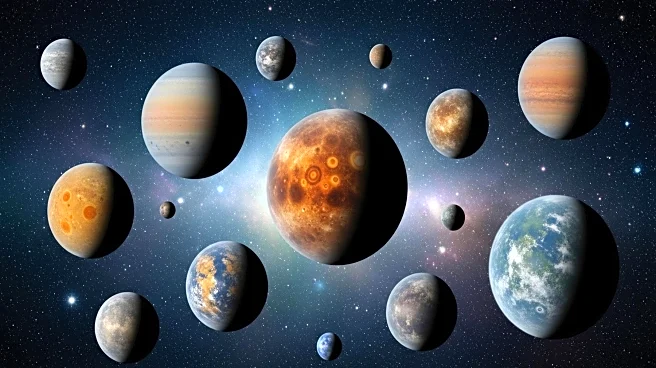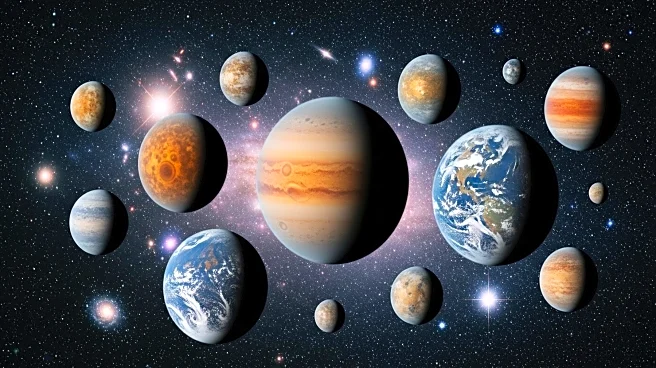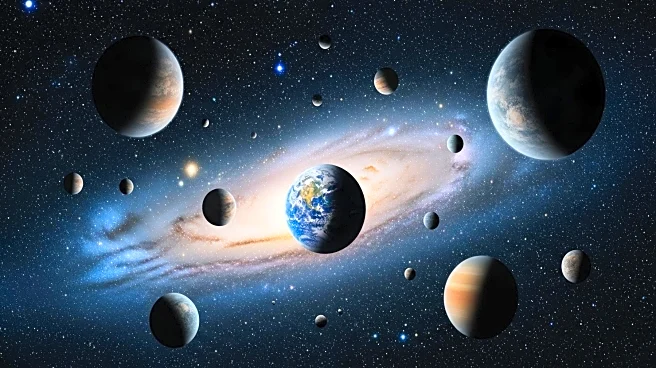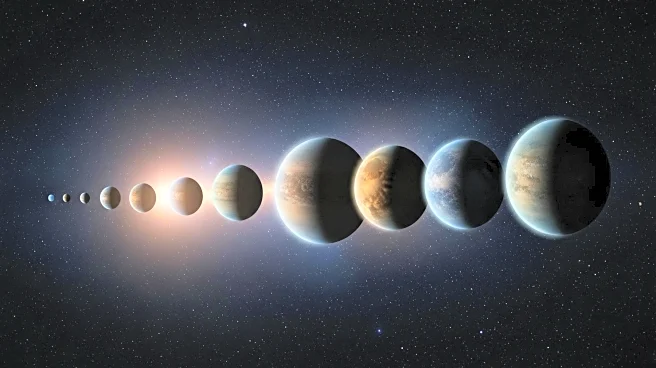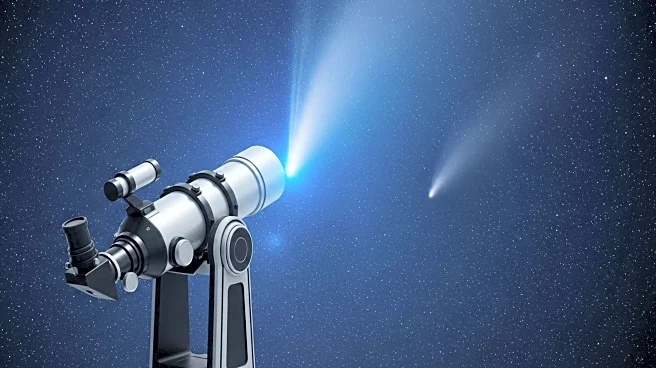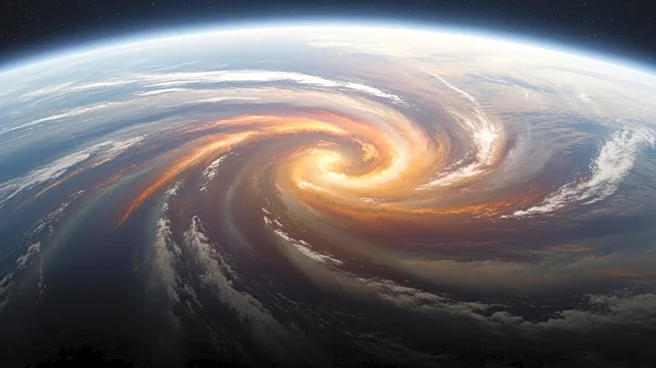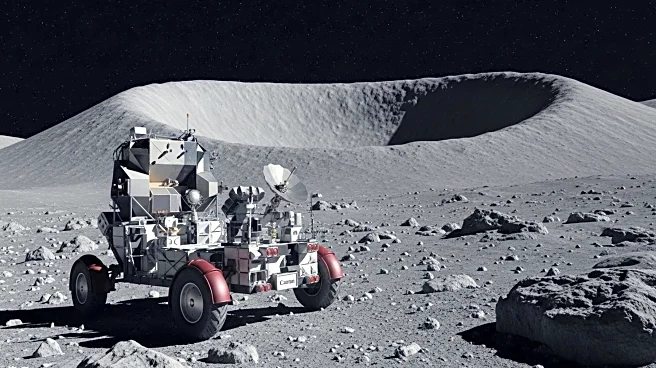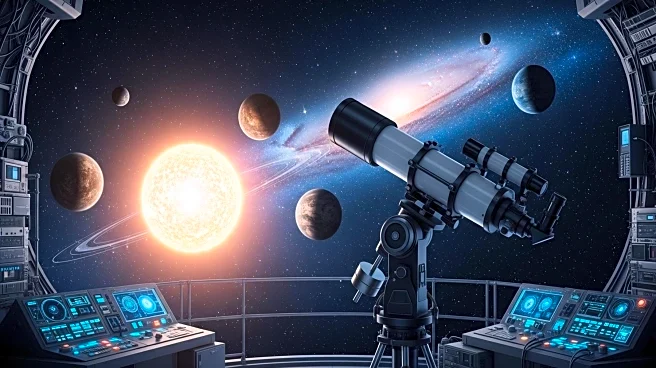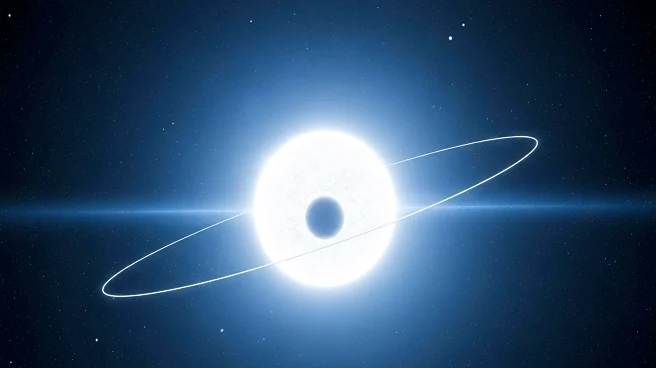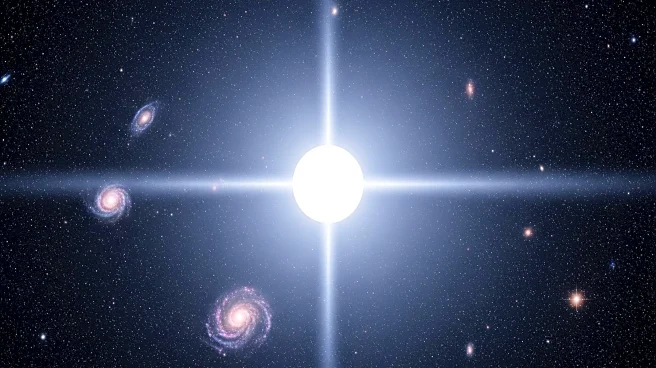What's Happening?
NASA has officially confirmed the existence of 6,000 exoplanets, marking a significant milestone in the search for planets beyond our solar system. These exoplanets vary in size and composition, with some resembling Earth and others being massive gas giants. The discovery is the result of decades of exploration using NASA's telescopes, which have transformed our perception of the night sky. The agency is now focusing on studying Earth-like planets more closely, developing advanced instruments to block starlight and increase the chances of finding planets that could potentially support life.
Why It's Important?
The confirmation of 6,000 exoplanets represents a major advancement in astrophysics and planetary science, offering insights into planet formation and the potential for life beyond Earth. This discovery enhances our understanding of the universe and informs future space exploration missions. The focus on Earth-like planets could lead to breakthroughs in identifying habitable environments and understanding the conditions necessary for life. As NASA continues to develop technologies to study these distant worlds, the potential for discovering alien life becomes more tangible, influencing scientific priorities and public interest in space exploration.
What's Next?
NASA plans to conduct upcoming missions to study Earth-like exoplanets more closely, despite the challenges posed by the brightness of stars compared to their planets. The development of instruments designed to block starlight will be crucial in advancing this research. As more exoplanets are verified, NASA's efforts will likely focus on identifying those with conditions suitable for life. The scientific community will continue to analyze data from these missions, potentially leading to new discoveries and collaborations aimed at exploring the universe's mysteries.
